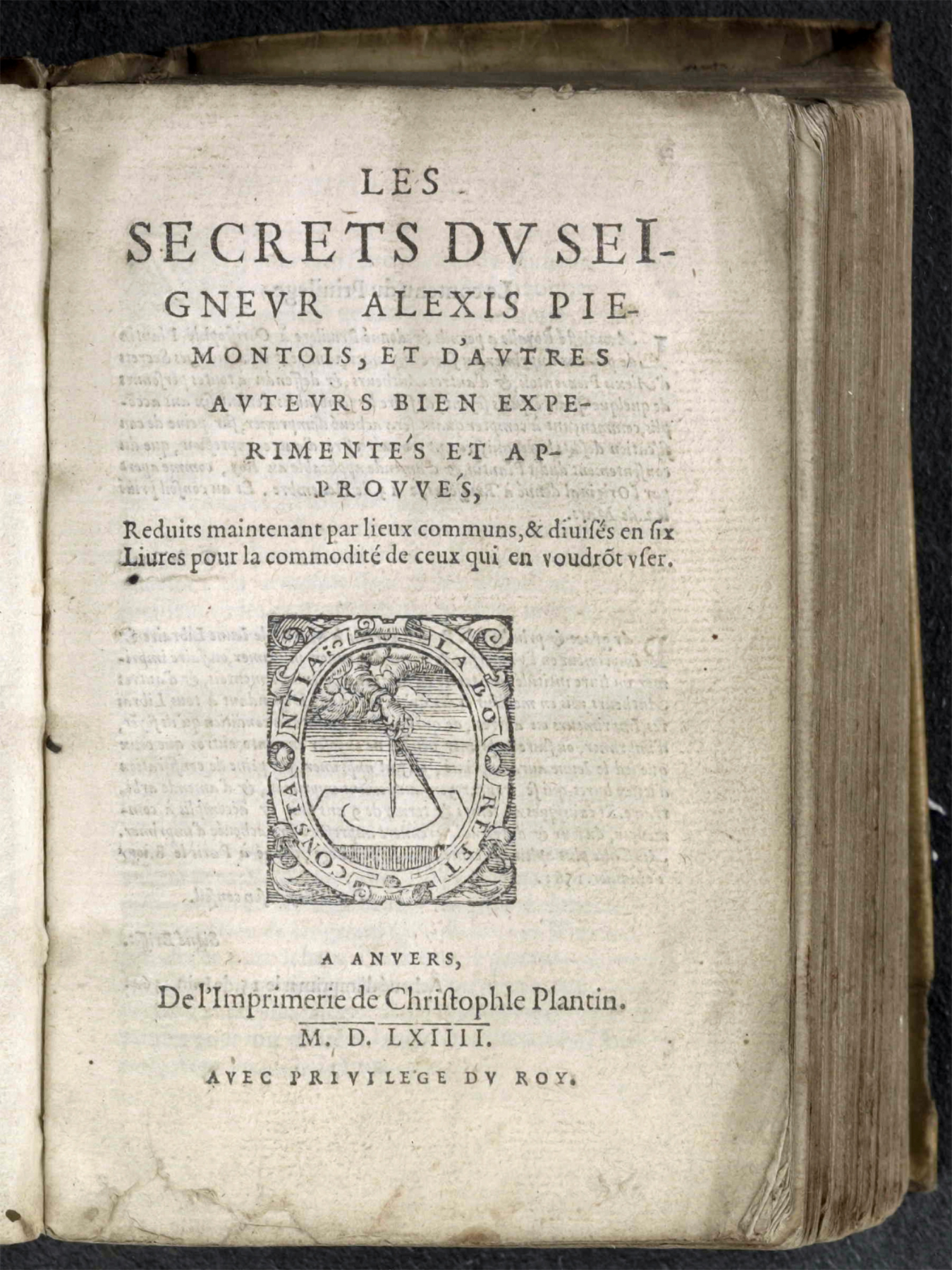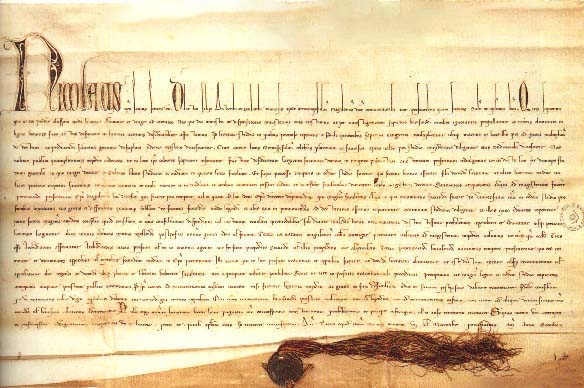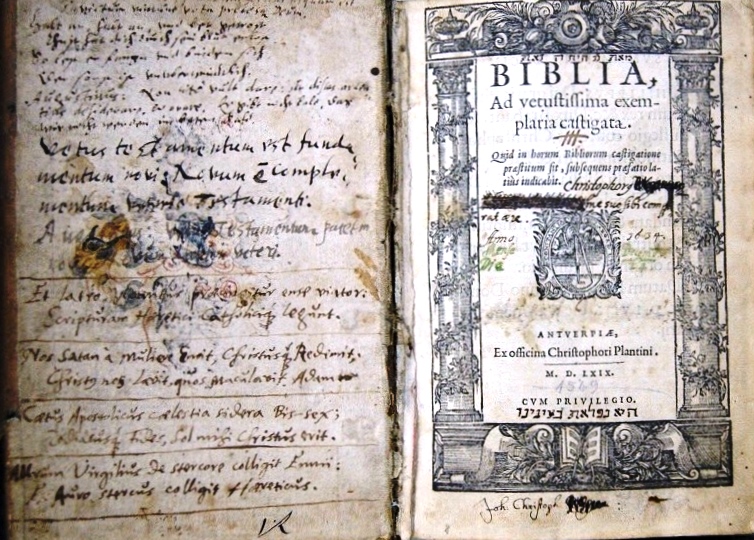|
Plantarum Seu Stirpium Historia
'Plantarum seu stirpium historia' is an illustrated botanical text by the Flemings, Flemish physician Lobelius (Matthias de l'Obel (1538–1616) and published in Antwerp in 1576. Later, he translated it into Flemish dialects, Flemish in 1581 with the title ''Kruydtboeck''. This was l'Obel's second work, following publication of the ''Stirpium adversaria nova'' in London in 1570. This work was intended as a companion publication to his ''Stirpium adversaria nova'', and incorporates a revised version of the latter, as ''Nova stirpium adversaria''. History L'Obel's first work was the ''Stirpium aduersaria noua'', published in London in 1571. The ''Plantarum seu stirpium historia'' of 1576 was intended as a companion piece, and was published in conjunction with a re-issue of ''Stirpium aduersaria noua'', as ''Nova stirpium adversaria'' In 1571 l'Obel published his Flemish translation of ''Plantarum'', as ''Kruydtboeck'' (Herb book), and in 1605 he reissued the ''Stirpium''. The ''P ... [...More Info...] [...Related Items...] OR: [Wikipedia] [Google] [Baidu] |
Matthias De L'Obel
Mathias de l'Obel, Mathias de Lobel or Matthaeus Lobelius (1538 – 3 March 1616) was a Flemish physician and plant enthusiast who was born in Lille, Flanders, in what is now Hauts-de-France, France, and died at Highgate, London, England. He studied at the University of Montpellier and practiced medicine in the low countries and England, including positions as personal physicians to two monarchs. A member of the sixteenth-century Flemish School of Botany, he wrote a series of major treatises on plants in both Latin and Dutch. He was the first botanist to appreciate the distinction between monocotyledons and dicotyledons. The ''Lobelia'' plant is named after him. Life Mathias de l'Obel was born in Lille (Flemish ''Rijsel'') in the County of Flanders, Spanish Netherlands, now French Flanders in 1538, the son of Jean De l'Obel, a lawyer whose practice specialized in aristocrats in the army. Relatively little is known about his life. By the age of sixteen he had already devel ... [...More Info...] [...Related Items...] OR: [Wikipedia] [Google] [Baidu] |
De L'Écluse
Charles de l'Écluse, L'Escluse, or Carolus Clusius (19 February 1526 – 4 April 1609), seigneur de Watènes, was an Artois doctor and pioneering botanist, perhaps the most influential of all 16th-century scientific horticulturists. Life Clusius was born Charles de l' Écluse in 1526, in Arras (Dutch ''Atrecht''), then in the County of Artois, Spanish Netherlands, now northern France (Hauts-de-France). At the urging of his father, who wanted him to enter the law, he commenced his studies in Latin and Greek at Louvain, followed by civil law. His father then gave him some money to move to Marburg to further his legal studies, but after eight months when his mentor moved away from Marburg he switched to theology, initially at Marburg and then on the suggestion of one of his professors at Wittenberg, where he also began a study of philosophy. Even at Marburg he had also developed an interest in plants that he continued in Wittenberg. Aware of the emerging study of botany, h ... [...More Info...] [...Related Items...] OR: [Wikipedia] [Google] [Baidu] |
Botany Books
Botany, also called , plant biology or phytology, is the science of plant life and a branch of biology. A botanist, plant scientist or phytologist is a scientist who specialises in this field. The term "botany" comes from the Ancient Greek word (''botanē'') meaning "pasture", " herbs" "grass", or " fodder"; is in turn derived from (), "to feed" or "to graze". Traditionally, botany has also included the study of fungi and algae by mycologists and phycologists respectively, with the study of these three groups of organisms remaining within the sphere of interest of the International Botanical Congress. Nowadays, botanists (in the strict sense) study approximately 410,000 species of land plants of which some 391,000 species are vascular plants (including approximately 369,000 species of flowering plants), and approximately 20,000 are bryophytes. Botany originated in prehistory as herbalism with the efforts of early humans to identify – and later cultivate – edible ... [...More Info...] [...Related Items...] OR: [Wikipedia] [Google] [Baidu] |
Cincinnati Museum
The Cincinnati History Museum is an urban history museum in Cincinnati, Ohio, United States. It opened in 1990 at the Cincinnati Museum Center at Union Terminal. The museum features the recreated Cincinnati Public Landing. Explore a recreation of the bustling Public Landing from the late 1850s and climb aboard the Queen of the West, a replica side-wheel steamboat. Take an aerial view of Cincinnati from the early 1900s through 1940s in Cincinnati in Motion, a 1/64-scale replica of the city complete with the nation’s largest S-scale train model. Cincinnati In Motion is a scale model representation of Downtown Cincinnati in the 1940s featuring working streetcars. Galleries The Cincinnati History Museum included 6 main galleries until its temporary closure in 2016: * Cincinnati In Motion * Cincinnati Goes to War * Early Settlement * Flatboat Gallery * Public Landing * Machine Tools As of 2024, its exhibits now include: * Cincinnati in Motion * Made in Cincinnati * Shaping o ... [...More Info...] [...Related Items...] OR: [Wikipedia] [Google] [Baidu] |
Bloomsbury Publishing USA
Bloomsbury Publishing plc is a British worldwide publishing house of fiction and non-fiction. It is a constituent of the FTSE SmallCap Index. Bloomsbury's head office is located in Bloomsbury, an area of the London Borough of Camden. It has a US publishing office located in New York City, an India publishing office in New Delhi, an Australia sales office in Sydney CBD and other publishing offices in the UK including in Oxford. The company's growth over the past two decades is primarily attributable to the ''Harry Potter'' series by J. K. Rowling and, from 2008, to the development of its academic and professional publishing division. The Bloomsbury Academic & Professional division won the Bookseller Industry Award for Academic, Educational & Professional Publisher of the Year in both 2013 and 2014. Divisions Bloomsbury Publishing group has two separate publishing divisions—the Consumer division and the Non-Consumer division—supported by group functions, namely Sales and Mark ... [...More Info...] [...Related Items...] OR: [Wikipedia] [Google] [Baidu] |
Cambridge University Press
Cambridge University Press is the university press of the University of Cambridge. Granted letters patent by Henry VIII of England, King Henry VIII in 1534, it is the oldest university press A university press is an academic publishing house specializing in monographs and scholarly journals. Most are nonprofit organizations and an integral component of a large research university. They publish work that has been reviewed by schola ... in the world. It is also the King's Printer. Cambridge University Press is a department of the University of Cambridge and is both an academic and educational publisher. It became part of Cambridge University Press & Assessment, following a merger with Cambridge Assessment in 2021. With a global sales presence, publishing hubs, and offices in more than 40 Country, countries, it publishes over 50,000 titles by authors from over 100 countries. Its publishing includes more than 380 academic journals, monographs, reference works, school and uni ... [...More Info...] [...Related Items...] OR: [Wikipedia] [Google] [Baidu] |
Christoffel Plantyn
Christophe Plantin ( nl, Christoffel Plantijn; – 1 July 1589) was a French Renaissance humanist and book printer and publisher who resided and worked in Antwerp. Life Plantin was born in France, probably in Saint-Avertin, near the city of Tours, Touraine. He was not born to a wealthy family, and his mother died when Plantin was still quite young. As a youth he apprenticed as a bookbinder in Caen, Normandy, and also married there. In 1545, he and his wife, Joanna Rivière, set up shop in Paris, but after three years they chose to relocate to the booming commercial center of Antwerp, where Plantin became a free citizen and a member of the Guild of St Luke, the guild responsible for painters, sculptors, engravers and printers. The quality of his work as a bookbinder brought him into contact with nobility and wealth. By 1549, he headed one of the most well-respected publishing houses in Europe. He was responsible for printing a wide range of titles, from Cicero to religi ... [...More Info...] [...Related Items...] OR: [Wikipedia] [Google] [Baidu] |
Monocotyledon
Monocotyledons (), commonly referred to as monocots, (Lilianae ''sensu'' Chase & Reveal) are grass and grass-like flowering plants (angiosperms), the seeds of which typically contain only one embryonic leaf, or cotyledon. They constitute one of the major groups into which the flowering plants have traditionally been divided; the rest of the flowering plants have two cotyledons and are classified as dicotyledons, or dicots. Monocotyledons have almost always been recognized as a group, but with various taxonomic ranks and under several different names. The APG III system of 2009 recognises a clade called "monocots" but does not assign it to a taxonomic rank. The monocotyledons include about 60,000 species, about a quarter of all angiosperms. The largest family in this group (and in the flowering plants as a whole) by number of species are the orchids (family Orchidaceae), with more than 20,000 species. About half as many species belong to the true grasses ( Poaceae), which are ... [...More Info...] [...Related Items...] OR: [Wikipedia] [Google] [Baidu] |
University Of Montpellier
The University of Montpellier (french: Université de Montpellier) is a public university, public research university located in Montpellier, in south-east of France. Established in 1220, the University of Montpellier is one of the oldest universities in the world. The university was split into three universities (the University of Montpellier 1, the Montpellier 2 University, University of Montpellier 2 and the Paul Valéry University, Montpellier III, Paul Valéry University Montpellier 3) for 45 years from 1970 until 2015 when it was subsequently reunified by the merger of the two former, with the latter, now named Paul Valéry University, Montpellier III remaining a separate entity. History The university is considerably older than its formal founding date, associated with a papal bull issued by Pope Nicholas IV in 1289, combining all the centuries-old schools into a university, but the first statutes were given by Conrad of Urach in 1220. It is not known exactly when t ... [...More Info...] [...Related Items...] OR: [Wikipedia] [Google] [Baidu] |
Guillaume Rondolet
Guillaume Rondelet (27 September 150730 July 1566), also known as Rondeletus/Rondeletius, was Regius professor of medicine at the University of Montpellier in southern France and Chancellor of the University between 1556 and his death in 1566. He achieved renown as an anatomist and a naturalist with a particular interest in botany and ichthyology. His major work was a lengthy treatise on marine animals, which took two years to write and became a standard reference work for about a century afterwards, but his lasting impact lay in his education of a roster of star pupils who became leading figures in the world of late-16th century science. Early life and education Rondelet was born in Montpellier in 1507. His father was an , a combination of pharmacist, grocer and druggist. His father died while he was a child and he was brought up in the care of his elder brother.Planchon, J.É. (1866): 11 His health was poor until he reached the age of 18. He was educated in Montpellier and ... [...More Info...] [...Related Items...] OR: [Wikipedia] [Google] [Baidu] |
Woodcuts
Woodcut is a relief printing technique in printmaking. An artist carves an image into the surface of a block of wood—typically with gouges—leaving the printing parts level with the surface while removing the non-printing parts. Areas that the artist cuts away carry no ink, while characters or images at surface level carry the ink to produce the print. The block is cut along the wood grain (unlike wood engraving, where the block is cut in the end-grain). The surface is covered with ink by rolling over the surface with an ink-covered roller (brayer), leaving ink upon the flat surface but not in the non-printing areas. Multiple colors can be printed by keying the paper to a frame around the woodblocks (using a different block for each color). The art of carving the woodcut can be called "xylography", but this is rarely used in English for images alone, although that and "xylographic" are used in connection with block books, which are small books containing text and images in t ... [...More Info...] [...Related Items...] OR: [Wikipedia] [Google] [Baidu] |
Christophori Plantini
Christophe Plantin ( nl, Christoffel Plantijn; – 1 July 1589) was a French Renaissance humanist and book printer and publisher who resided and worked in Antwerp. Life Plantin was born in France, probably in Saint-Avertin, near the city of Tours, Touraine. He was not born to a wealthy family, and his mother died when Plantin was still quite young. As a youth he apprenticed as a bookbinder in Caen, Normandy, and also married there. In 1545, he and his wife, Joanna Rivière, set up shop in Paris, but after three years they chose to relocate to the booming commercial center of Antwerp, where Plantin became a free citizen and a member of the Guild of St Luke, the guild responsible for painters, sculptors, engravers and printers. The quality of his work as a bookbinder brought him into contact with nobility and wealth. By 1549, he headed one of the most well-respected publishing houses in Europe. He was responsible for printing a wide range of titles, from Cicero to religious hymn ... [...More Info...] [...Related Items...] OR: [Wikipedia] [Google] [Baidu] |







